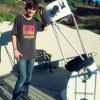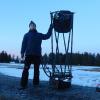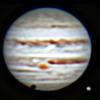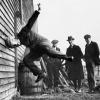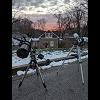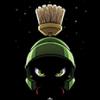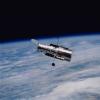
An interesting observation - stacked OIII filters
#1

Posted 08 January 2014 - 12:58 PM
I've been looking forward to trying my new DGM OIII filter on the Crab Nebula. Back in early November I had an astonishing view of the Crab through Jimi Lowrey's 48 inch scope in Fort Davis Texas using a DGM OIII and had to get one for myself - there were filaments everywhere! I've had a Lumicon OIII since the early 90's and even though I've never felt it performed poorly, I just had to try the DGM version to see how it worked with my 28 inch. Plus, it was on sale at the time.
So Saturday night was my big chance to compare these two OIII filters. I started with the view through my old Lumicon filter and noted that the sky conditions allowed me to see only the main two filaments with the rest of the nebula a soft glow.
Then the DGM filter - drum roll please - and the filaments were barely seen at all - dang! So my twenty year old Lumicon OIII is the clear winner on the Crab, but then I had the sudden and wild notion to stack the filters to see how they worked together...
To my surprise, the view through the stacked filters was superior to the Lumicon OIII by itself. The Crab showed the main two filaments well along with a faint but distinctly lacy background overlain on a soft nebulous background glow. The view was not perceptively darker than with a single filter, which at first surprised me, but with a moments thought made sense - the transmission lines of both filters must line up pretty well, but with just enough difference to enhance the Crab's filaments. Pretty cool!
I didn't try this Sunday night nor did I look at other objects with either filter so I won't try to generalize this observation beyond what I saw on the Crab - that will have to wait for other nights. But it was a happy, unanticipated result I want to share with you all even though this effect may be specific to how my two OIII filters interact.
#2

Posted 08 January 2014 - 01:58 PM
Eric
#3

Posted 08 January 2014 - 02:56 PM
Then the DGM filter - drum roll please - and the filaments were barely seen at all - dang! So my twenty year old Lumicon OIII is the clear winner on the Crab, but then I had the sudden and wild notion to stack the filters to see how they worked together...
To my surprise, the view through the stacked filters was superior to the Lumicon OIII by itself. The Crab showed the main two filaments well along with a faint but distinctly lacy background overlain on a soft nebulous background glow. The view was not perceptively darker than with a single filter, which at first surprised me, but with a moments thought made sense - the transmission lines of both filters must line up pretty well, but with just enough difference to enhance the Crab's filaments. Pretty cool!
The Lumicon OIII is narrower than the DGM OIII, so it should work a little better on improving the contrast of some of the filaments. Stacking the two should have only given you a little less light transmission, so I suspect that what you saw might have been either a change in local conditions or perhaps a personal effect due to your eyes getting a little more sensitive. However, a couple of weeks ago, in my 14 inch at 135x, I was able to see the filaments without a filter, which surprised the heck out of me. Overall, I still like a narrow-band filter for the Crab, but higher power often helps nearly as much on that nebula as a filter does (at least from a dark sky site). Clear skies to you.
#4

Posted 08 January 2014 - 04:51 PM
But there's no way to be sure based on one night and on one object so I take this result with a big grain of salt for now. If it was the conditions changing, they changed for the worse during my observations, but my eyes getting better adapted throughout the observation isn't something to dismiss.
I'll try this observation again the next time I'm out, hopefully at the end of the month, and see what happens. However, it would be interesting to exactly measure the transmission profiles of my two OIII filters to see if they do combine to improve contrast.
#5

Posted 08 January 2014 - 06:26 PM
#6

Posted 08 January 2014 - 07:32 PM
All best,
Jon
#7

Posted 08 January 2014 - 07:44 PM
#8

Posted 08 January 2014 - 11:18 PM
Howard, any idea why the sky was brighter than usual?
#9

Posted 09 January 2014 - 12:34 AM
It's virtually guaranteed that the bandpasses of the two filters differ. And so the combination of the two will result in a narrower resultant bandpass which the two share in common.
Filter tilt would change the passband location, so if one were tilted in its mount and coupled with another filter, that might result in a narrower passband. On the DGM OIII filter I received for my review, a spectroscope showed the passband to be nearly 1.3 times wider than that of the Lumicon OIII. The DGM OIII I got has a fairly symmetrical passband that is centered between the two OIII lines, so again, if stacked, what would result would be a passband width that would be pretty close to the same as that of the Lumicon OIII with nearly 90% transmission on the lines. If you really want a test of what narrowness does on the Crab nebula, go use the Baader OIII that has the 85 angstrom FWHM passband. I have seen my eyes change sensitivity slightly as the night progresses as well as seeing small but definite rapid changes in transparency in a given area of sky, so I feel those effects may need to be considered unless you have the stack in a filter wheel where the change between the stacked system and a non-stacked can be instantly done. Clear skies to you.
#10

Posted 09 January 2014 - 12:55 AM
But as they say, more research is warranted and I'll check out the Baader OIII as well.
#11

Posted 09 January 2014 - 12:57 AM
Interesting. Presumably all interference filters are different and stacking them is averaging; like a bunch of musicians playing the same tune sound cleaner than each one ever could. I had never thought of this though. If I ever get to observe again with this weather, I may stack my 2 and 1.25" Orions - surely they are not identical either.
Howard, any idea why the sky was brighter than usual?
That's a memorable way to think about this Ivan! Also, the northern sky was glowing from a low grade aurora brightening the entire sky.
#12

Posted 10 January 2014 - 04:50 AM
#13

Posted 10 January 2014 - 03:59 PM
Remember that comparison we did Eric?, (Beatlejuice).
#14

Posted 11 January 2014 - 01:53 AM
Lets not forget that the DGM O-III has a WIDE band pass and compares to the Orion Ultrablock very close in performance.
Remember that comparison we did Eric?, (Beatlejuice).
Actually, the DGM OIII that I received for review offers a performance that is similar to that of the DGM NPB narrow-band, although there is a slight boost in performance for the DGM OIII. The DGM OIII's bandwidth is on the order of 150 to 160 angstroms, so it is somewhat wider than that of the Lumicon OIII. The NPB and Ultrablock offer similar performance as well, although I do like the slightly higher throughput of the NPB, as well as the NPB's inclusion of a deep red secondary passband for viewing red coloration in M42 and M8. Indeed, the first good look I got at "the Jellyfish" nebula (supernova remnant IC 443 in Gemini) came in my 9.25 inch SCT equipped with the NPB filter. It was visible in the OIII but I liked the view of it better in the NPB filter. Clear skies to you.
#15

Posted 11 January 2014 - 11:32 AM
interesting observation! You likely narrowed the passband by stacking the two filters, similar as when double stacking solar H-alpha filters.
This narrowing of the pass band is actually not really an "averaging", it is rather a multiplication of the transmission curves. It happens also when you stack absolutely identical filters.
The narrowing effect is less pronounced with identical filters having a the optimal box-type pass band and is more pronounced, for instance, with filters having a more Gaussian-type pass band. Below is shown what would happen if you double or triple stack identical filters having either a typical box-type or a gaussian pass band
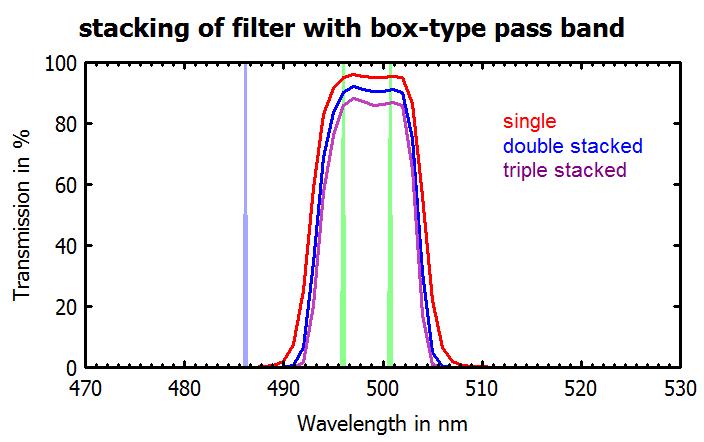
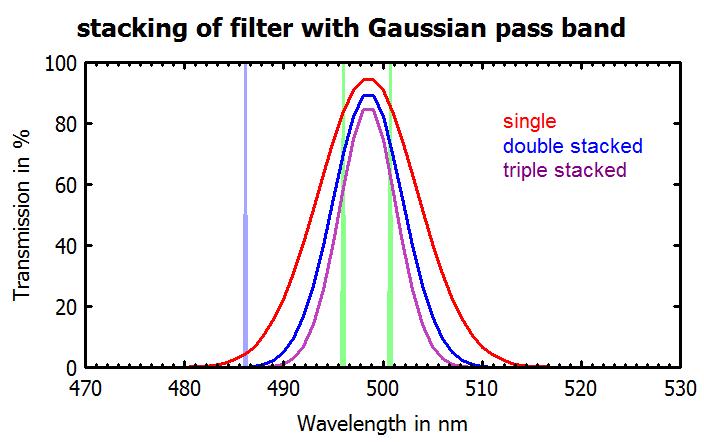
#16

Posted 11 January 2014 - 03:22 PM





